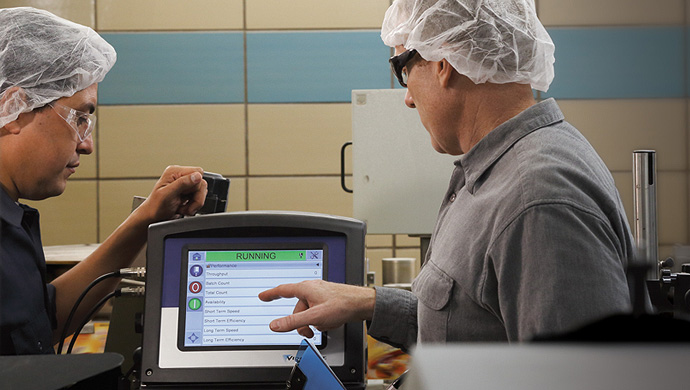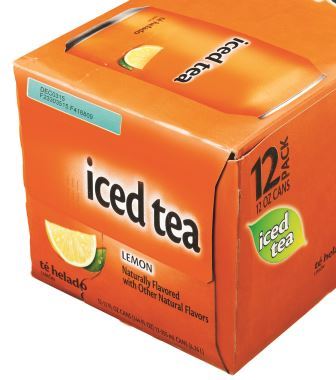Interview with Anthony Blencowe, Business Unit Manager for CIJ at Videojet Technologies:
What have been the developments in continuous inkjet (CIJ) in recent years?
The major developments are centered on uptime and availability. When customers are asked what they are most interested in when looking to purchase a CIJ printer, uptime is invariably top of the list – particularly in the food and beverage sector, where production schedules are very demanding. All customers understand the need to maintain equipment, but what is not acceptable to them is unplanned downtime. Our developments have been around planned maximum uptime of the printer, and also minimum downtime for maintenance when it becomes necessary. A good example is our 1000 line, which features our long life core. This component is new to the industry and has been designed to run for five years without the need to replace it or carry out planned maintenance. The purchase of the equipment is just the beginning of the journey for our customers and delivering on their expectations is something that we take extremely seriously.
We have also seen developments around high speed and high resolution printing technologies. Our products are still evolving, for example we have added new printers to our 1000 range which have been fitted with a micro-nozzle system specifically for microprinting. The 1620 HR 1650 HR break through the uptime barriers that have been associated with microprinters in the past and have proven to be very popular and reliable in the field.

New developments in CIJ can offer manufacturers the speed and efficiency they need, and reduce downtime
Have inks evolved at the same time?
Inks have continually evolved alongside printing technology. The inks that we supply are an example of finely-tuned, high performance chemistry. We have development centers equipped with highly qualified personnel who develop inks for us. Inks are one of the essential elements in the uptime equation, because a printer will run for many years using these fluids, so our focus is to fine-tune the inks to work in harmony with a high performance printer. Inks are required to perform over longer periods than they ever have before. If we talk about a printer that runs on a planned maintenance cycle of 14,000 hours, or up to five years, we have to talk about inks that can survive in this environment and that can deliver to a high level of expectation.
We see different materials used in production environments now. A lot of the materials are plastic, and as a company we have to stay ahead of the emerging trends. An example of how we have adapted our inks to suit these new formats is a recently developed high adhesion, specialist ink for plastic packaging with grease residuals. This material is extremely difficult to penetrate. You have plastic foil, which is a challenge on its own, but then it is contaminated by the production process. Our experts were able to develop a very special ink that has a high adhesion to these materials, even though these residuals are present on the packaging.

Colored inks available in green and blue for Videojet 1000 Line of CIJ printers are designed for printing high-contrast codes on light colored surfaces, and for printing on untreated polyethylene and polypropylene substrates typically found in the food packaging industry
Videojet has also introduced new blue and green colored inks to assist with reducing waste at a global food and beverage retailer. Using colors to differentiate between disposable packaging sizes has helped a well-known fast food establishment eliminate scrap and increase process efficiency by identifying the correct packaging size the first time around.
These new blue and green colored inks are the latest addition to the vast selection of fluids optimized for the Videojet 1000 Line of CIJ printers. The inks have been specifically designed for printing high-contrast codes on light colored surfaces, and are also excellent for printing on untreated polyethylene and polypropylene substrates typically found in the food packaging industry. They also offer excellent adhesion on plastics, metals and coated paperboards, as well as other general purpose substrates including paper, wood, ceramic and glass.
How have you had to adapt to the regulatory landscape – for example, with regard to coding requirements for enhanced traceability?
With any new development, be it hardware or software, its function must enable our customers to remain 100 percent in line with regulatory requirements. Regulations are set to ensure the safety of consumers, to ensure that what they buy is safe, and coding and marking has a very important role to play in that process. Take a bottle for example. By looking at a “best before” date, a “use by” date or a “manufacturing date” it gives consumers crucial information about the safety of the product – the code is speaking to the consumer. Readability therefore is a very important aspect, as if a consumer cannot read a code they are unlikely to buy the product.
Secondly, the integrity of the code is paramount. Wrong dating is obviously something that needs to be prevented upstream in the production process, as is any incorrect coding. You have to detect this early in production or better still avoid it altogether. Code AssuranceTM built into printers now makes it almost impossible for operators to enter an incorrect code. For example, you can exclude dates that do not exist, such as 31 April.
Track and trace is still a scattered landscape but there are specific industries where traceability is more in focus than anywhere else. At Videojet we focus on the consumer and the producer alike, enabling codes to be added to products that allow them to be traced if necessary. Coding has the ability to allow producers to limit product recalls to specific batches should it be necessary.
How popular is CIJ as a technology?
We are very interested in how CIJ is perceived by customers, and recent research has shown it to be the most popular technology for variable coding and marking for primary and date coding – more than 60 percent are using CIJ and do not intend to switch within the next 12 months. Of those considering a change in technology – 40 percent are looking to switch to CIJ from other methods due to its uptime advantages.
Line optimization, however, is not only about having a printer that is able to deliver a good start in terms of investment but also flexibility in terms of integration, paired with maximum availability. We work hard to convey to our potential customers that this technology has come a long way in its development over the years. It is important to understand that the CIJ printer a customer may have purchased a few years ago will be far removed from what is currently available to them. CIJ, we believe, is very much a technology of the future.
How do you help customers to identify the correct printing solution for their needs?
To be able to choose from all available technologies is a clear advantage for Videojet’s customers as we can deliver a solution for any coding challenge – whether that be a CIJ printer, a thermal inkjet or a laser for example. We can assess a customer’s operation with a completely open mind and can recommend the best technology based specifically on their needs. We listen to what the customer wants to achieve within their production process and we work with them to ensure the correct technology is provided. Our experts can determine which system will suit almost immediately and are fully qualified to offer expert advice.
Are customers looking at the bigger picture when it comes to capital investment in CIJ printers? Are they more likely to look at TCO, OEE and ROI as opposed to concentrating on the initial investment cost alone?
This has been the case more and more in recent years and Videojet takes a holistic approach – monitoring the various functions the systems perform and feeding that data back to the customer. For example, our 1550 and 1650 CIJ printers are advanced products that were the first to bring real, actionable OEE metrics into a CIJ printer. What that means is that the printer actually records data relating its movements and behaviors over time that a customer can access and use to improve production efficiency.
One of the parameters any manufacturer will look at is upfront cost, especially high performing manufacturers – but we have to understand that line efficiency is really the heartbeat of today’s production environment and that it is not solely the capital investment in equipment such as a printer that must be considered. The value it delivers, over a period of use that will last for many years, is just as important. Focusing on this and giving customers the tools to interact with the printer in order to improve uptime has been very much front of mind for Videojet.
What are the challenges for manufacturers when it comes to coding and marking with CIJ?
CIJ is a proven technology and we have seen an influx of manufacturers coming into this marketplace over the years. Of course a customer invests in the technology within the printer, but what is important to remember is what they are buying that surrounds that technology – the services, the experience of the company, etc. Making the correct decision in this case is critical to get right. As soon as a customer commits to a printer it represents a commitment to many years of cooperation with the supplier company – so how do they choose a company that will continue to deliver positive results over a long period of time? How Videojet works with its customers is to open up its books to them and prove that it has the experience in delivering outstanding results for its existing customers. This continuous service is something in which the company is justifiably proud.

Code AssuranceTM built into printers now can prevent operators from entering an incorrect code
What, in your opinion, is the next step for CIJ printers?
CIJ printers will continue to evolve and we are constantly striving to find new ways to improve and develop our systems to create even more enhanced value propositions for our customers. To achieve this we look holistically at where the equipment is to be placed and how it will be used throughout its operational life. This life-cycle approach is very important to understand in terms of development. Printers are increasingly an integral component within operations, they communicate inside the line with other equipment and they deliver production-critical feedback to operators, which we also capture within the printer. We will see more remote service and connectivity options, as equipment that we place today has a longer operational lifespan and has to be able and flexible enough to adapt to changes in production.
Customers are always looking for speed and efficiency and are increasingly faced with the challenge of printing more code onto their products – such as nutritional information or details of provenance – often within the same small spaces allocated for far less information. It is a very fine balance to achieve. Firstly we make sure that the codes that are printed are correct, then we make sure they are highly legible, as print quality is a major focus for us. Increasing line speeds for multi-line printing is a challenge we are reacting to and driving at the moment, as we understand the market need for this.
Finally, giving customers the tools necessary to monitor the performance of their printers is one of the challenges customers relay to us. There are less people working on modern production lines and they are there to be an integral part of the production process, not to maintain the printer. We understand the importance of predictive maintenance and reporting, therefore our printers are able to provide this information without the need for constant attention.
Adidas Yeezy













